The tunnel down to ground level of Ford Field feels ominous. Cold concrete, echoing chatter, and a sign that reads, “Dead engine only past this point.”
I stroll past the sign, turn a corner, and run smack dab into a dense crowd of solemn faces. I’m not sure if it’s the bone-chilling Michigan air sweeping through the tunnel or the anticipation for what’s about to happen next, but everyone seems a little cagey.
Some are wearing helmets. Others don backpacks and chunky headsets. Many are bundled in puffy jackets, festooned in sponsorship logos and bright colors. Hosts with microphones, females in Spandex, and muscle men labeled “SECURITY”—everyone is staring past the tunnel’s mouth, into the stadium’s dark void. Shoulder to shoulder, they’re like gladiators seconds away from storming the dirt floor with swords and shields.
It’s eerily quiet, just for a moment.
Then a brash voice over a loud speaker breaks the silence.
“WELCOME TO MONSTER ENERGY SUPERMOTOCROSS!”
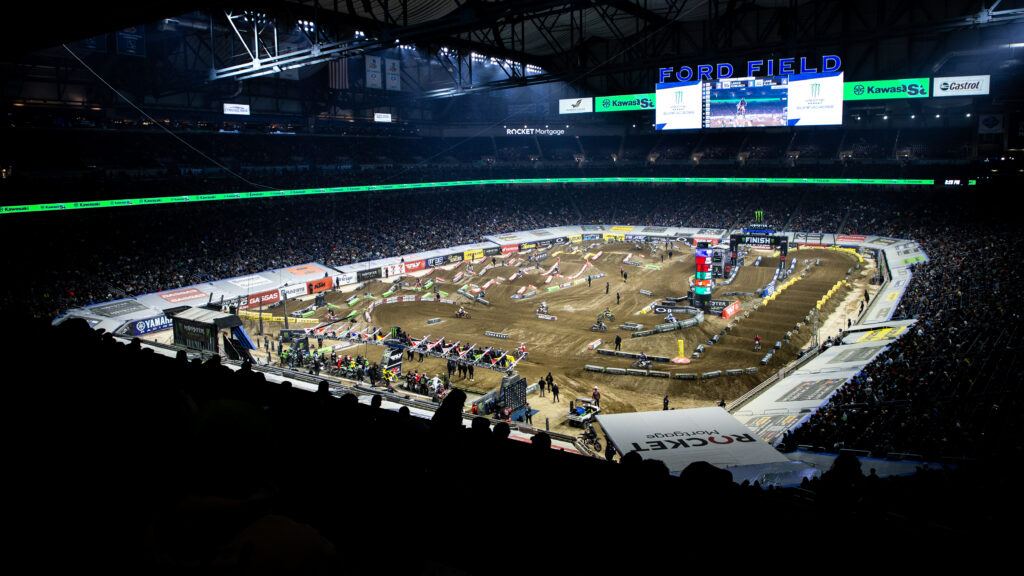
The lights high above dance across the stadium floor, revealing a dirt track in their spotlights. Fireballs shoot up from random spots around the building. A few of the motorcycles fire up. The smell of MR12 fuel wafts past my nose. It’s race day in Detroit.
Someone flicks the house lights and the larger picture comes into focus. The lineup of motorcycles and riders begin to file down the long tunnel and onto the dirt to lineup and start the heat races. To my left, just out of the tunnel, is wide starting gate. The metal gate drops on an official’s signal, releasing up to 40 riders at a time to do battle on the track constructed atop what is a football field most days out of the year.
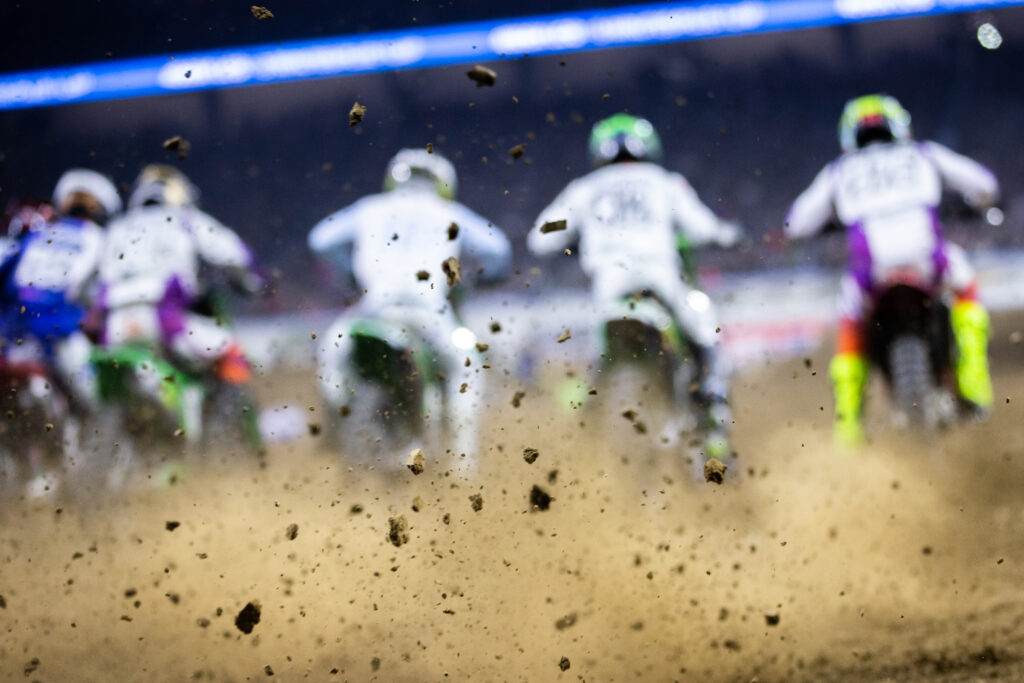
This weekend is different. Monster Energy AMA SuperMotocross has invaded the Motor City, and rather than green turf, the floor is covered in a layer of plywood. On top of the sheets, organizers have built a mix of large jumps, smaller—but not small—bumps, and sweeping berms that the riders navigate at a pace best described as heroic. It’s half-motorsports, half-acrobatics, and the whole thing is sensory overload, even for me.
Spectating from the stadium floor provided me with a new perspective on a sport that I’ve been watching and tracking for nearly two decades.
These riders are modern-day gladiators. Their athletic ability and control over a full-size motorcycle is impressive. Many have factory support from Honda, Yamaha, Kawasaki, and KTM to prepare their bikes. Two classes based primarily on engine displacement—250cc and 450cc—compete in respective races on purpose-built, temporary courses. Picture a traveling circus with motorcycles.
The hardest thing to comprehend is the scale of some of the features. Tractors push dirt into giant mounds on the floor. The banked corners are nearly five-feet tall, and the jumps look more like walls when facing them head-on. Then, there is a section of tightly spaced bumps of dirt called “whoops.”
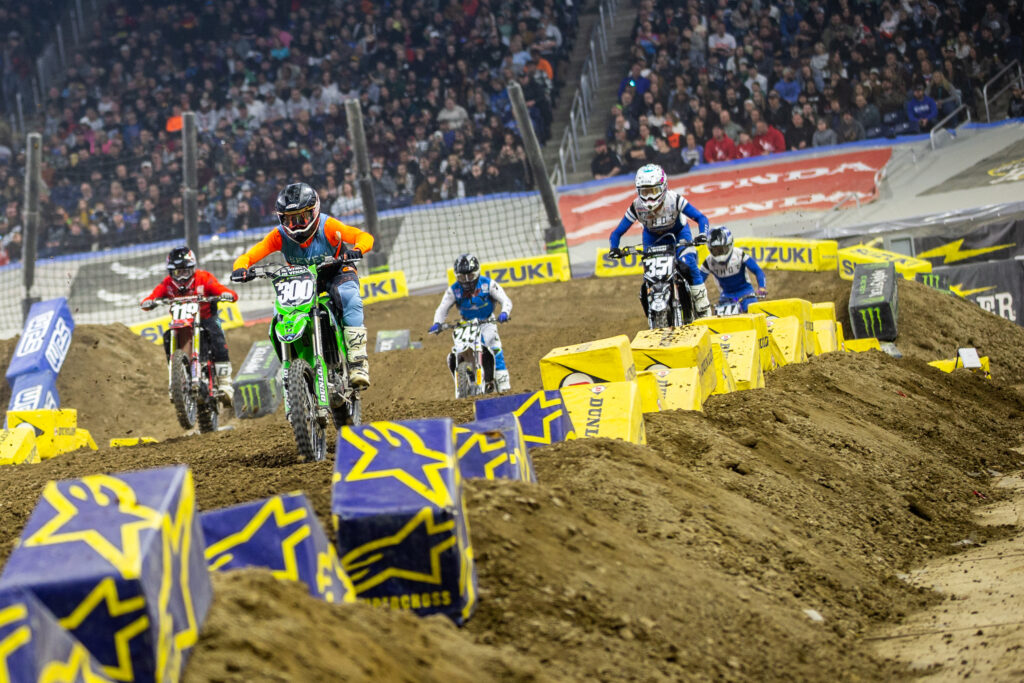
The whoops section looks massive. I have been watching Supercross for a long time but often from the relative comfort of my own couch, or, more accurately, the carpeted floor in front of my parents cathode ray tube television. Glowing images of colorful bikes and riders darted from side-to-side and the suspension movement captivated my young brain. The whoops section has always been my favorite of the tracks. It’s often where races are won … and lost. Get it right, and you have an advantage over the competition. Get it wrong, and you’ll at least need a new pair of pants. Possibly a cast.
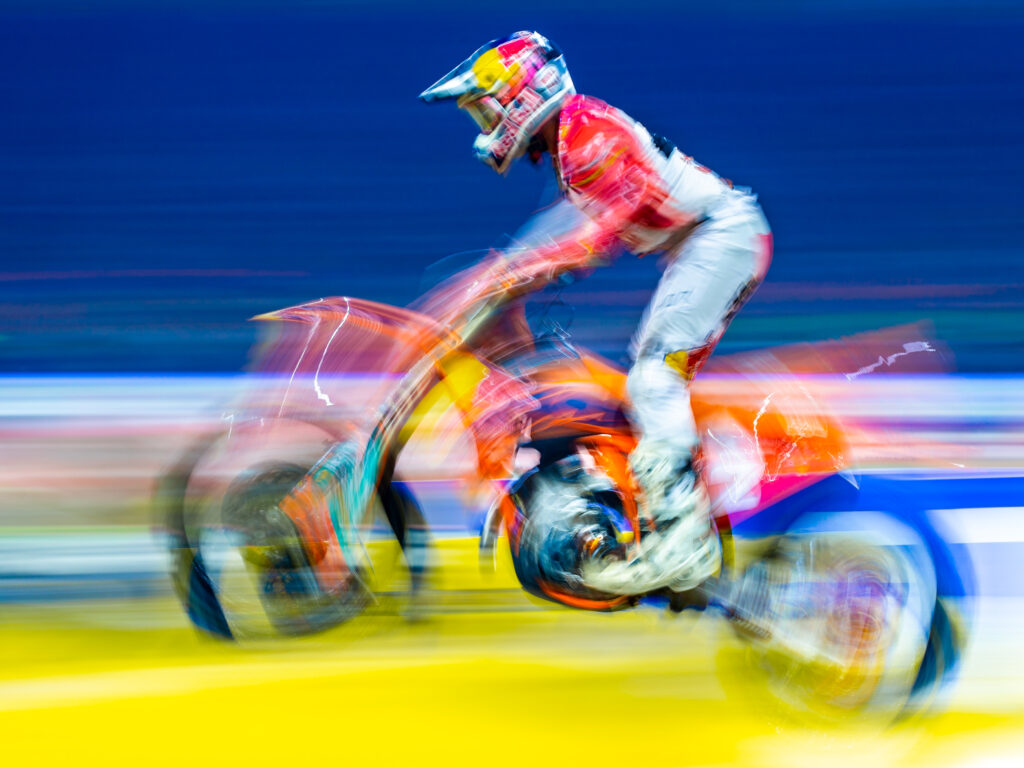
Only after standing off to the side of the whoops section during the first 250cc heat race did I even begin to grasp that those whoops are nearly waist-high on my six-foot frame.
Another thing that just doesn’t come through on television is the sound. It’s a blast of noise and fury as the machines go ripping by. The bikes’ exhaust notes creates a constant hum in the background of most video shots of the action, which can be distracting on television.
Not in person.
Standing trackside, or even in the press box above the stands, I can pick out the noise of the bike I’m watching. It reminds me of how you can hear your friend in a crowded bar as they tell you to order another round. Except, instead of shouting that they would prefer Coors, it’s the “RAP-RAP-RAP” of the single-cylinder engine freewheeling to it’s rev limiter while the rear tire is in the air, as the bike skips over the imposing mounds of dirt, grunting whenever the rear tire catches traction.
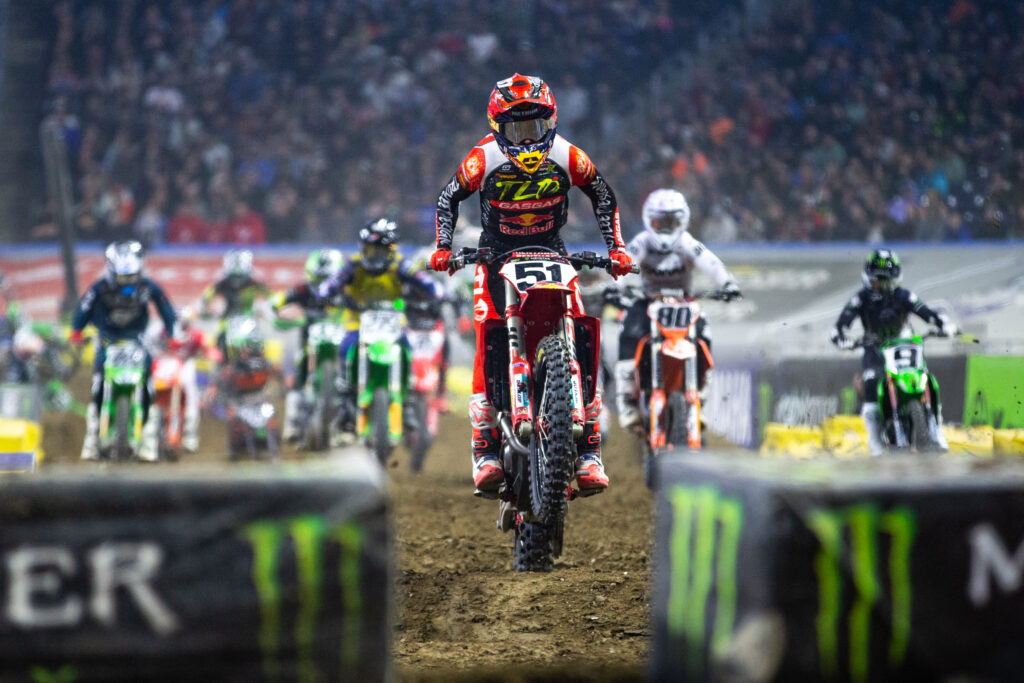
After initial moments of chaos and confusion, my brain finally acclimates and I can focus on certain elements. I follow one rider. I follow their path, noting where they change lines from one lap to the next as they accommodate the track’s changing conditions. The powerful machines spin their knobby rear Dunlops and dig ruts. If the track isn’t groomed between the eight races throughout the evening, the grooves would rival WWI trenches by the end of the night.
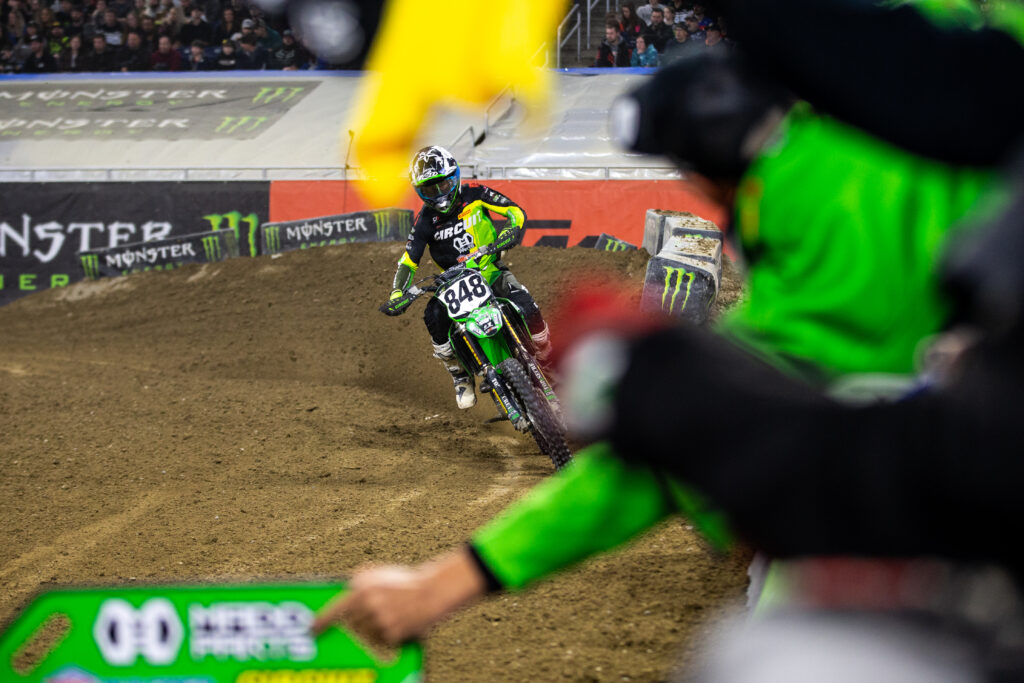
The whole show changed my perception of the sport. Even more impressive, this particular night in Detroit was merely the tenth round of a whopping 31-race Supermotocross calendar that spans all corners of the U.S. Also, for the first time this year, the schedule includes larger outdoor venues to blend AMA’s traditionally two-season sport—indoor Supercross and outdoor Motocross.
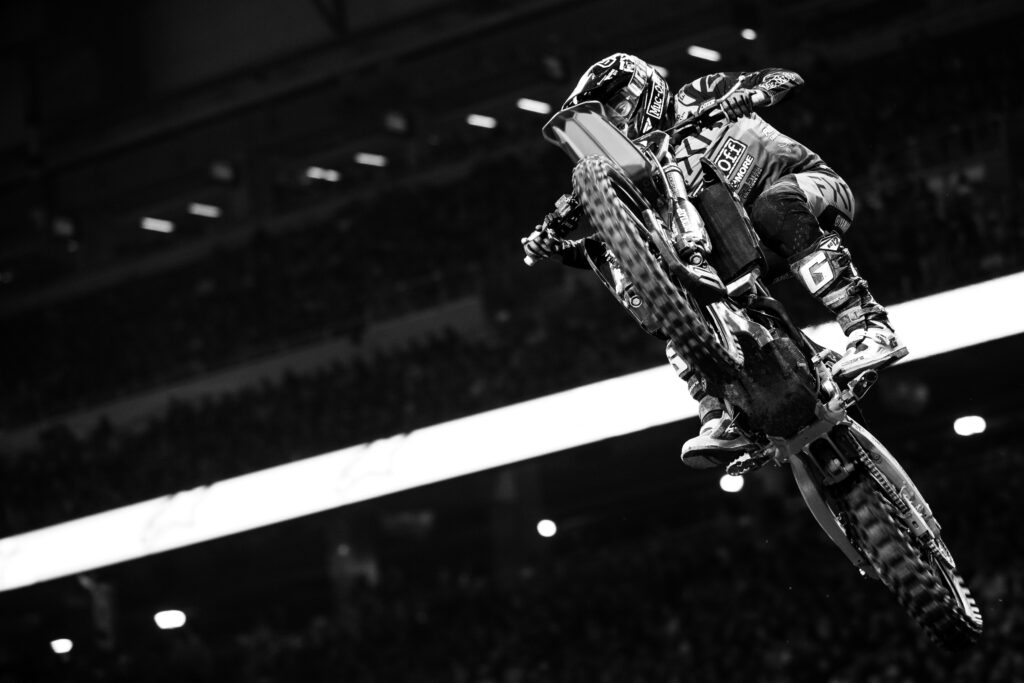
The championship rivalries are tighter than ever with multiple racers putting in great rides week after week. In addition to individual race drama, there’s a lot of fun in tracking the long-term strategy of the riders. After several dates into the season, you realize this sport is both checkers and chess, all being played at 50 mph over undulating terrain, whoops included.
Are you not entertained?

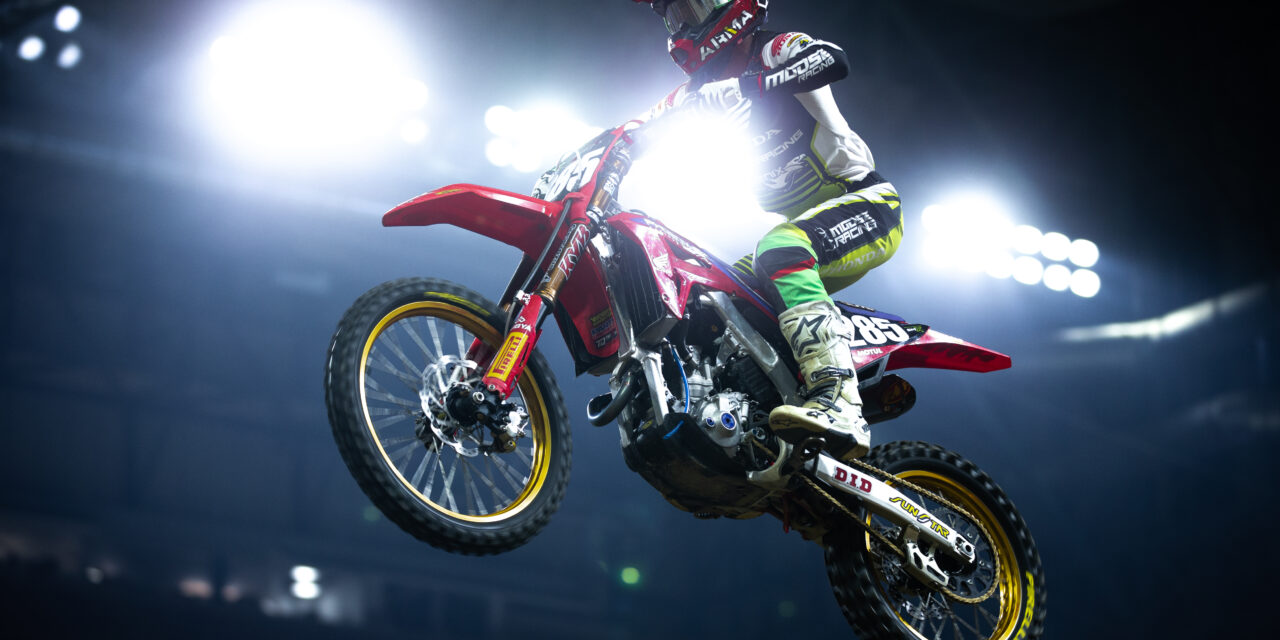
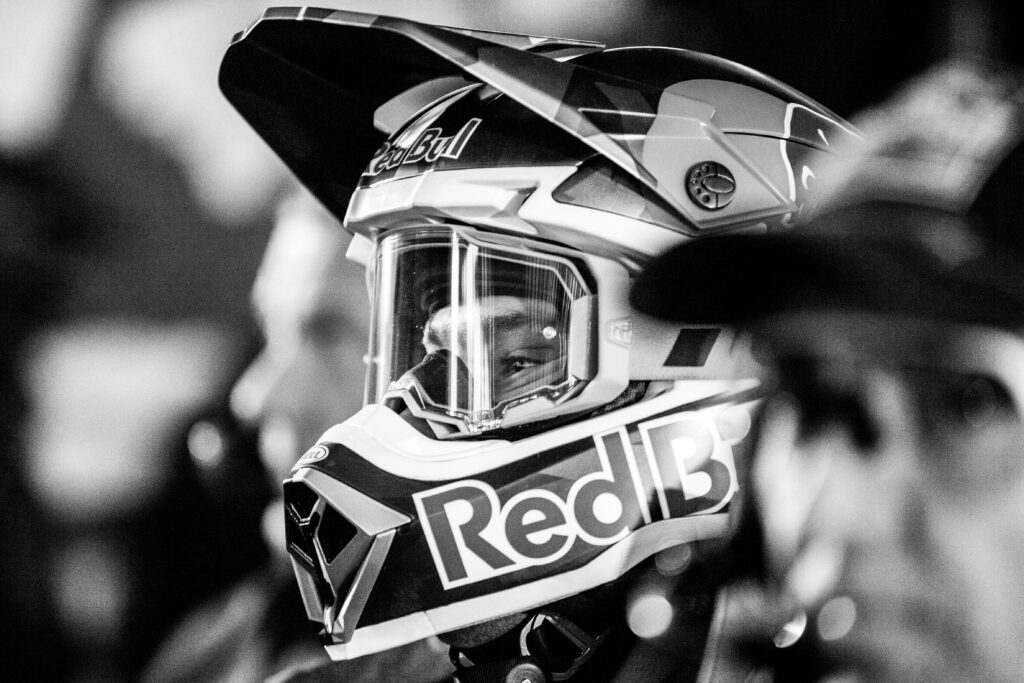
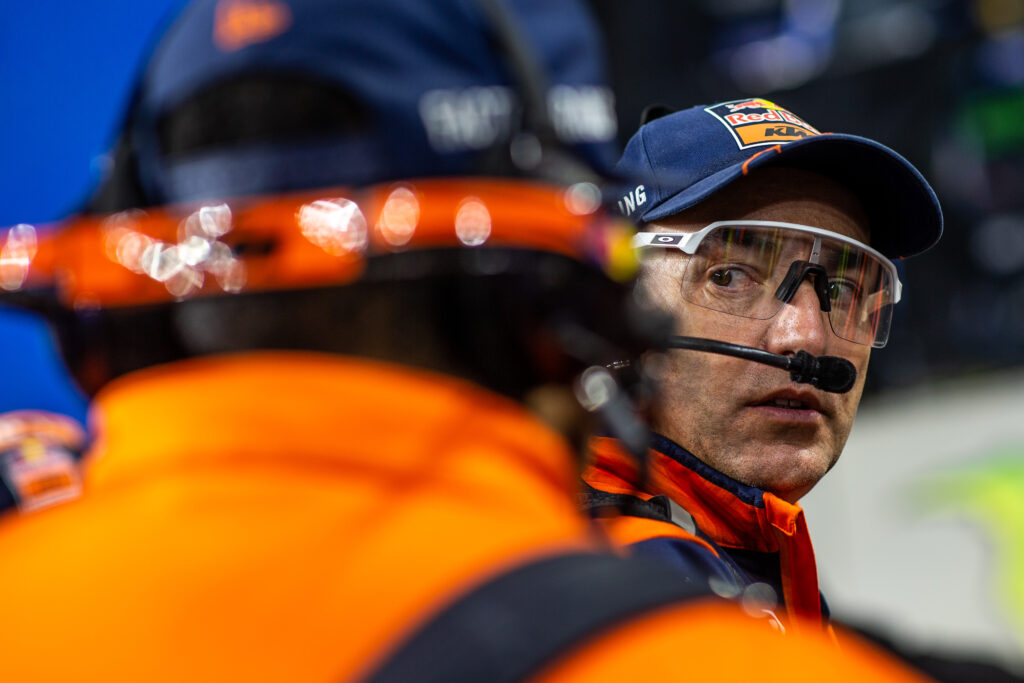
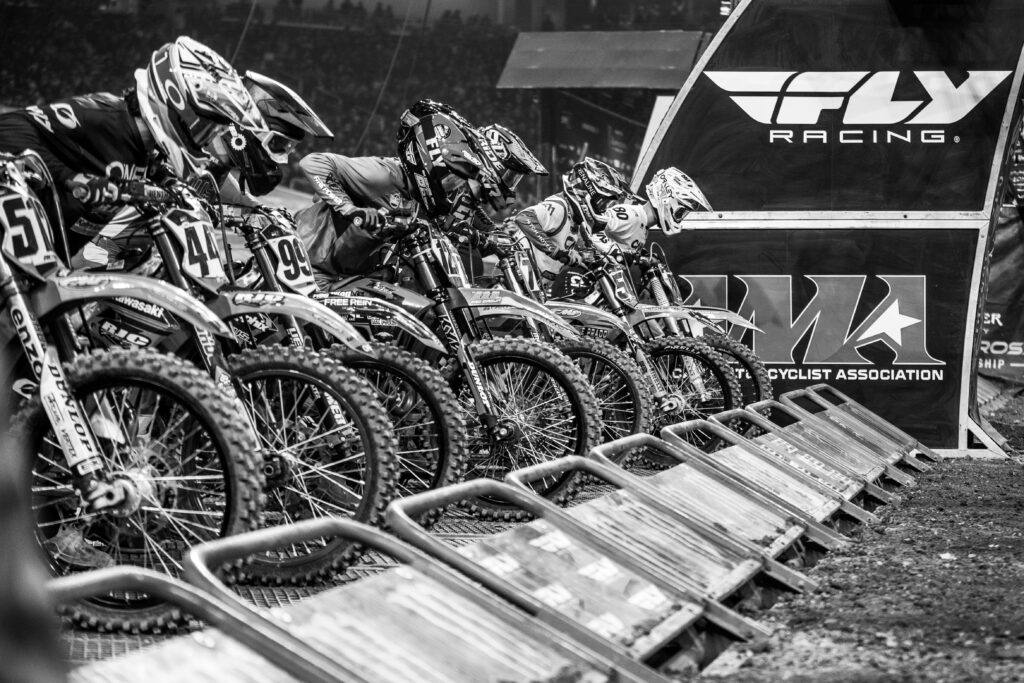

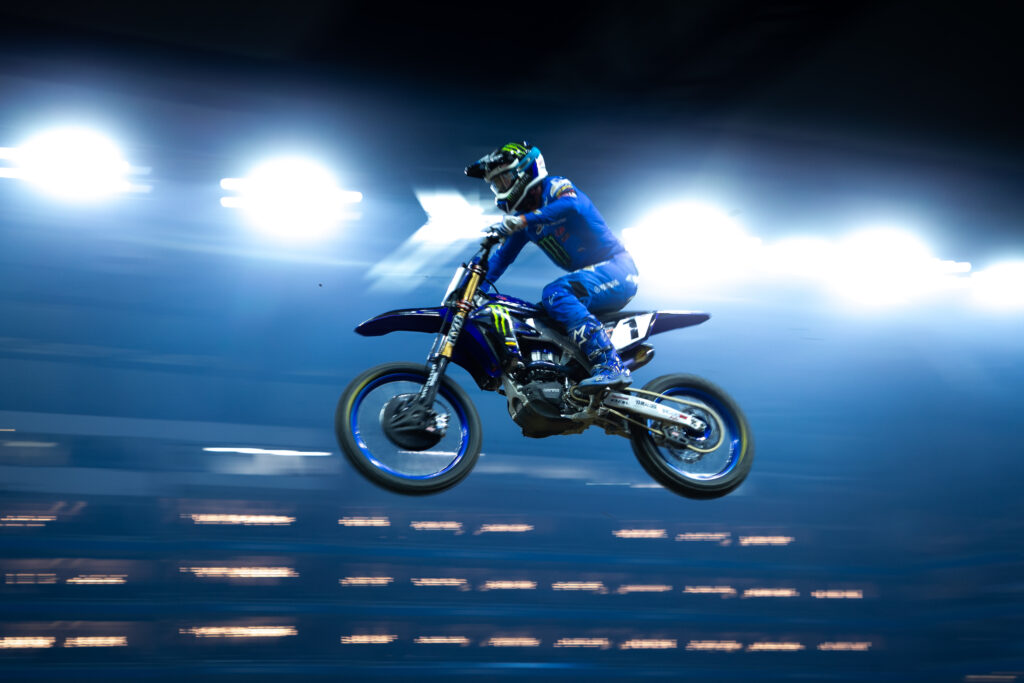
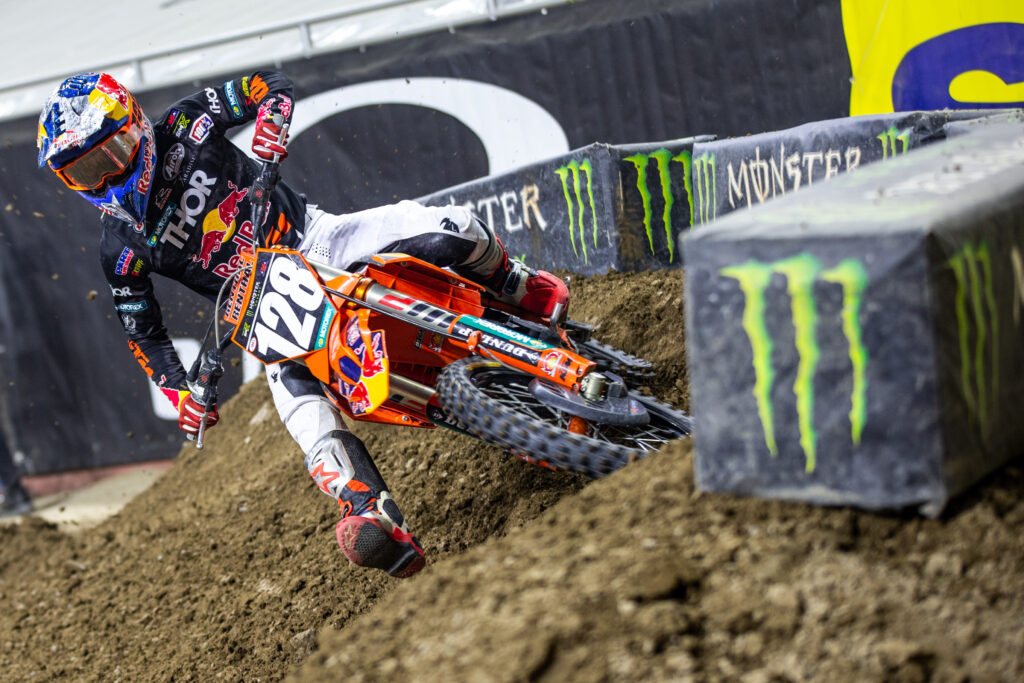

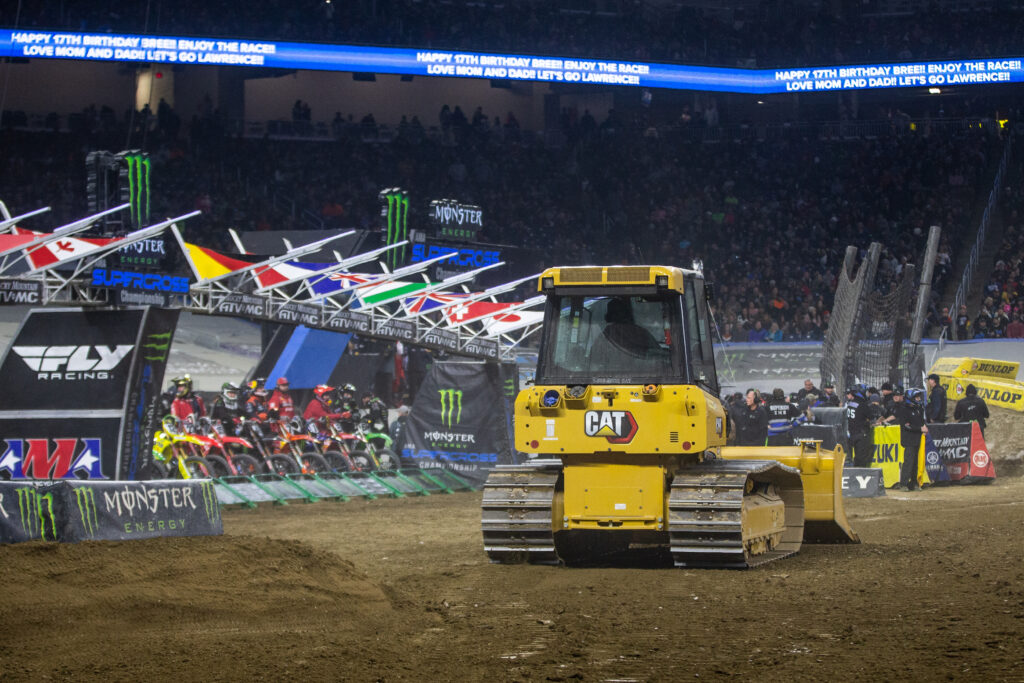
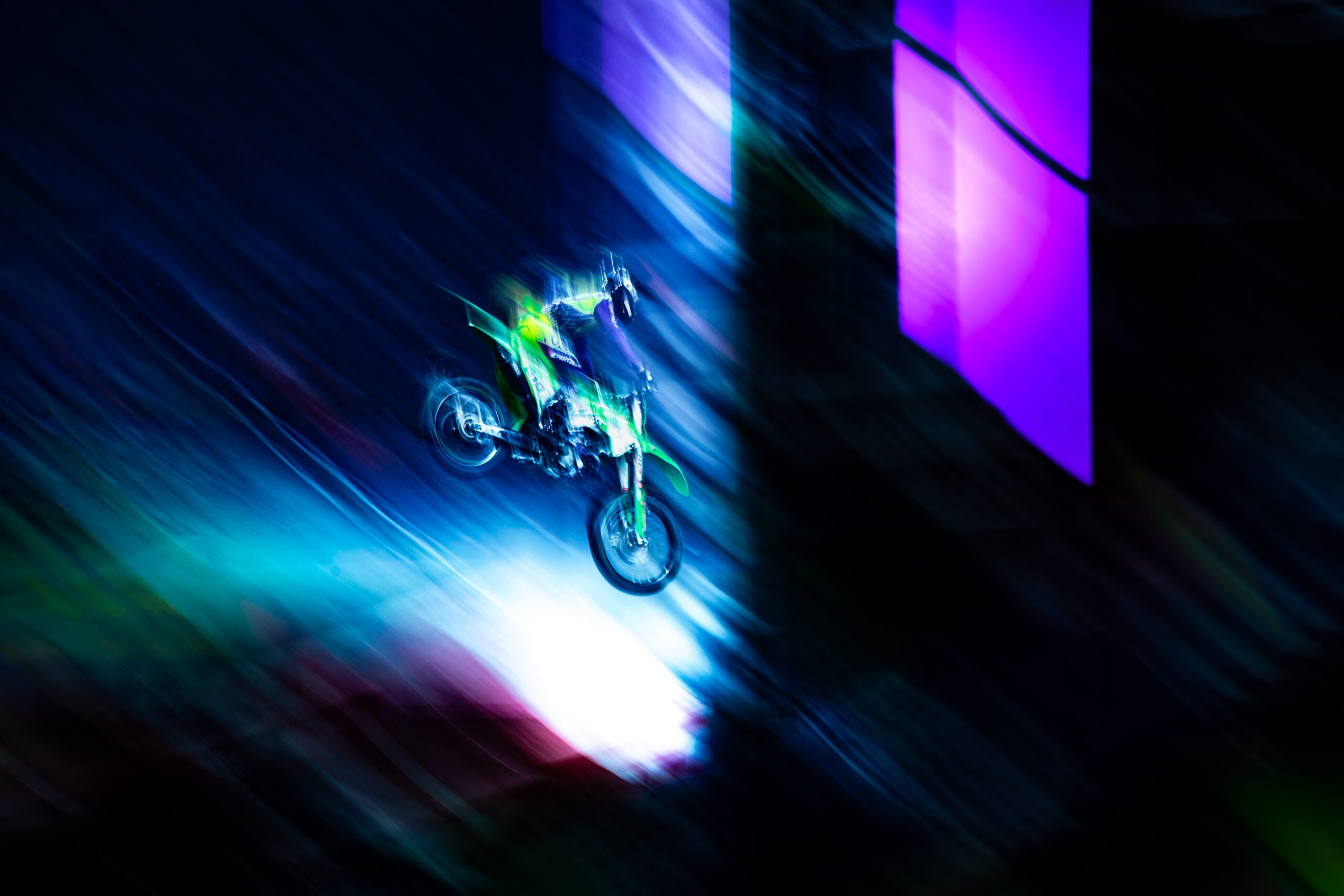
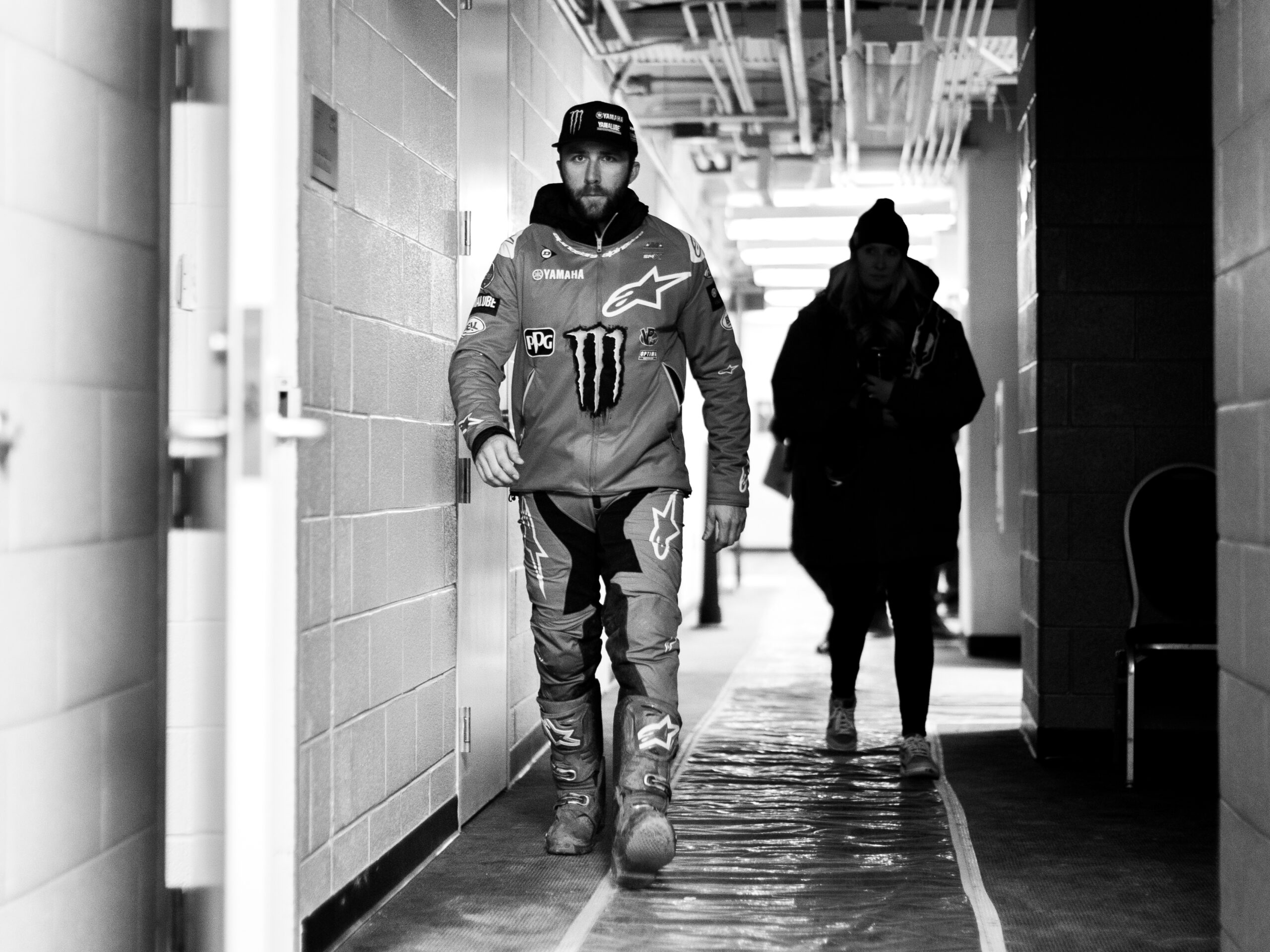
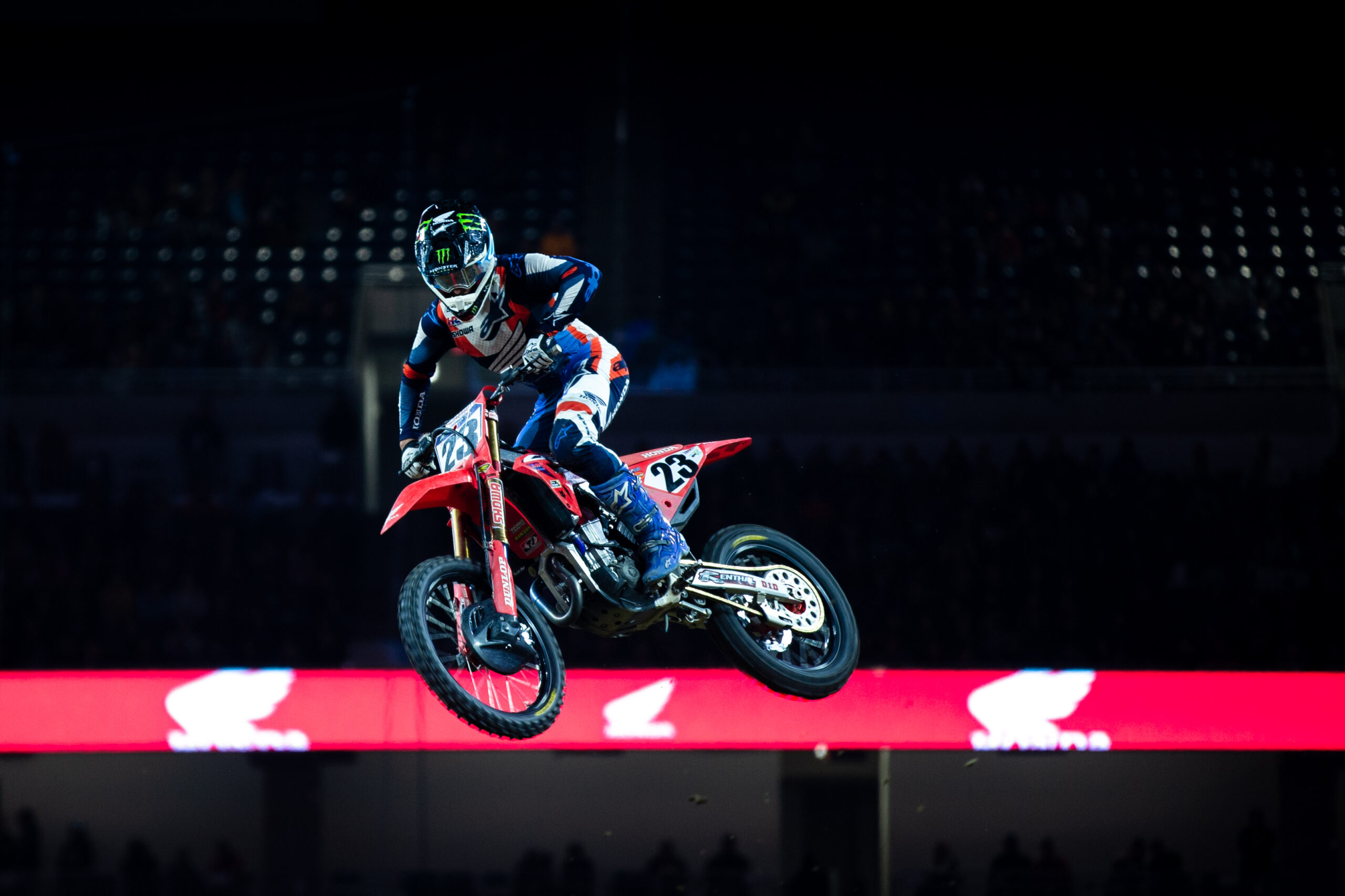

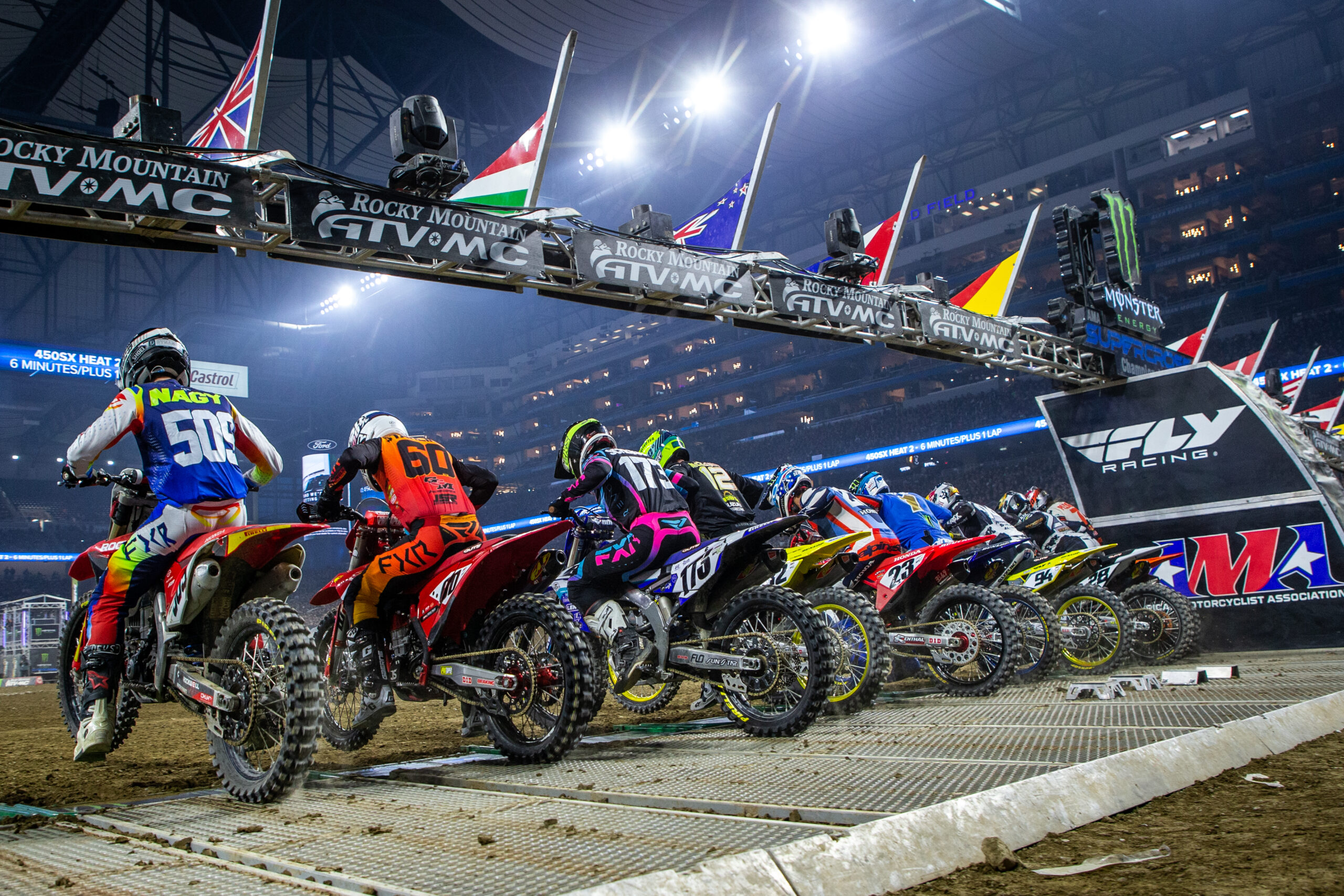
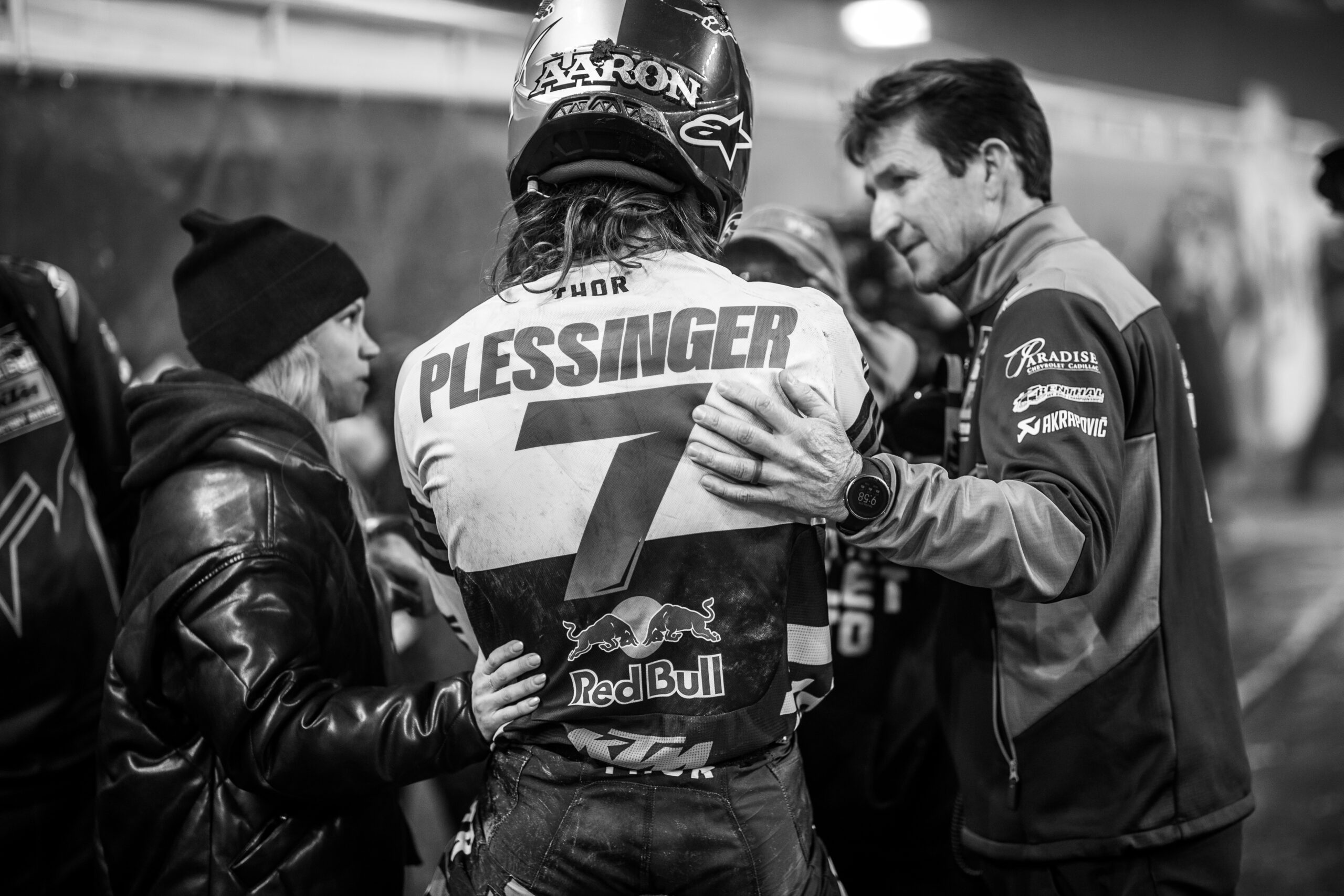
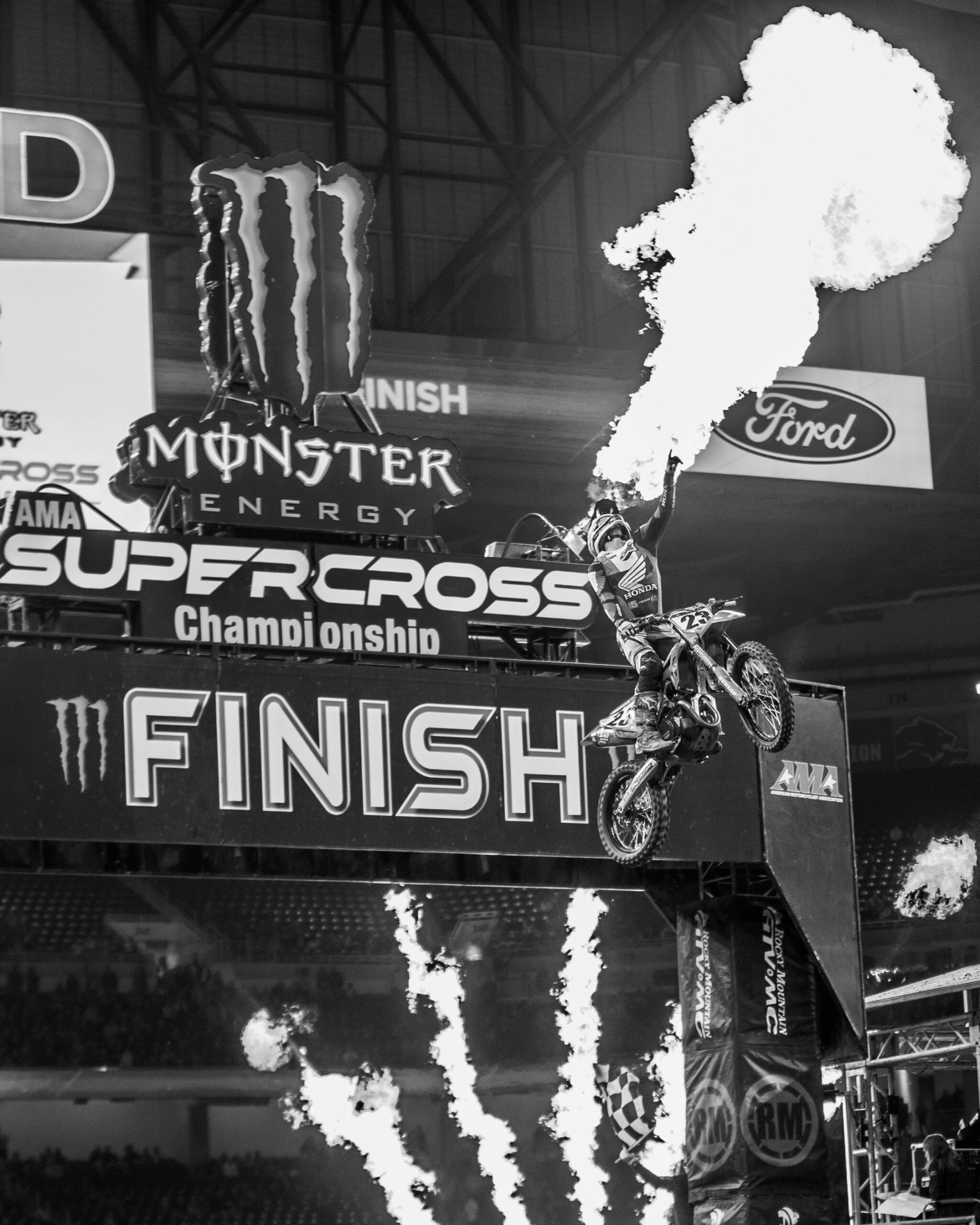

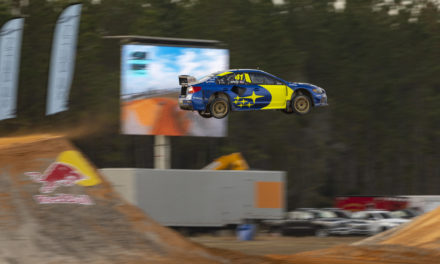

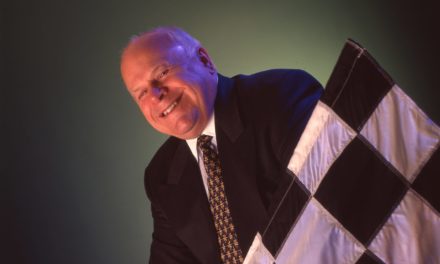
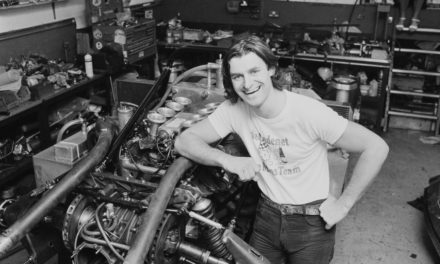




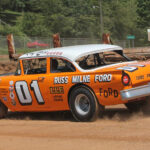
Great article Kyle. My first experience watching an indoor motocross race was in the mid 70’s at the now defunct Pontiac Silverdome at the infancy of this new phenomena. The sensory overload as you described was certainly something I remembered. Not to mention the 2 stroke smoke. I reintroduced myself to the sport just before Covid and really enjoy the action and competition again. The physical conditioning is never stressed enough IMO. These guys are in shape and the consequences for not being in shape can be disastrous. Side note : the value of old race bikes are increasing exponentially as well.